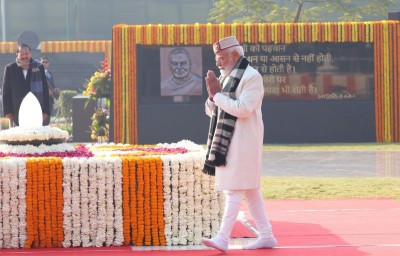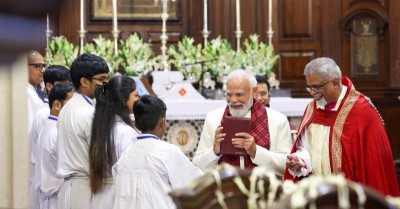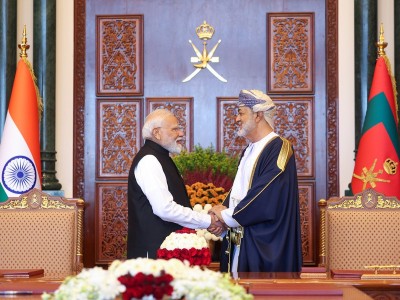 Pakistan
Pakistan
Pakistan witnessing a spike in death of journalists
Forty-two journalists were killed in Pakistan in the last four years -- 11 of them, in the last two years.
The cycle of targeting the messenger has scaled its ranking down to 158 out of 180 in the global surveys. But even that is no longer news.
Indeed, the killing of a newsman is no longer ‘news’ in Pakistan. Its condemnation, promise of an inquiry, and even investigations and protest demonstrations do not add up to much.
Two hastily enacted legislations, one by the National Assembly and another by the Sindh legislature precisely two years ago on this day (November 1) enacted during the Imran Khan era, were lying as dead ducks during Shehbaz Sharif’s days.
And now, a caretaker government, saying lofty things but doing little else, is piloting the country towards an election that could only cause more violence, going by Pakistan’s record, making the media even more vulnerable.
The last known killing that hit the headlines, but momentarily, was that of Jan Mohammad Mahar in August this year. UNESCO Director-General condemned the killing. This came a week after another journalist, Ghulam Asghar Khand, was shot to death near his home in Sindh.
This was despite the Sindh Assembly’s initiative in enacting a law that guaranteed physical safety, better working conditions and even better salaries. How much a law can do in a country where much of the media is privately owned and has limited business revenue and circulation is a moot point. That leaves the law’s implementation in grave doubt.
.jpg)
The year 2023 began with the federal Information Ministry releasing the data on January 21 that of the 42 journalists killed in Pakistan in past 4 years, 15 were from Punjab, 11 from Sindh, and 13 from Khyber Pakhtunkhwa.
One of the most high-profile killings was of Arshad Sharif last year. He had fled the country and moved to Dubai but had landed in Kenya where he was shot dead on a highway. The Kenyan authorities called it an ‘accident’.
They washed their hands of any conspiracy charge that some Pakistani intelligence people had paid the Kenya Police to carry out the task.
His wife, saying: ‘I am dying every day’ has since sued the Kenyan Police, Voice of America reported this month.
The latest survey on journalists’ safety in Pakistan by NGO Freedom Network bemoans the rising risk for journalists that makes the two legislations a mockery. In 2023, the country improved its freedom rank to 150 owing to the two laws. “But that is where the progress stops.”
The Friday Times (October 30, 2023) reported that besides the provinces, Islamabad has become the ground to target the journalists. The survey is titled: "One Step Forward, Two Steps Back – Pakistan Legislates on Safety of Journalists, But Still Fails to Protect Them." It was launched before the International Day to End Impunity, which falls on November 2.
The report noted that it was ‘ironic’ that most attacks against journalists took place in regions which had passed legislation aimed at ensuring their safety. A 37.5% rise in violations in Pakistan – 93 out of 248 cases recorded between August 2021 and August 2023- occurred in Islamabad alone.
While releasing the report, Iqbal Khattak, the Executive Director of Freedom Network, said: “Both the federal and Sindh governments are responsible for effectively dys-functionalizing their laws and therefore delaying and effectively denying justice to journalists."
"In these two years, both the Imran and Shehbaz governments failed to establish a safety commission mandated by the law, which meant that in effect, the federal law remained non-operationalised and hence failed to help a single of the 93 journalists in Islamabad that were killed, attacked, injured, threatened or harassed in the two years since its enactment. The two governments also failed to enforce the law," Khattak said.
(Photo Courtesy: Pixabay/Unsplash)
Support Our Journalism
We cannot do without you.. your contribution supports unbiased journalism
IBNS is not driven by any ism- not wokeism, not racism, not skewed secularism, not hyper right-wing or left liberal ideals, nor by any hardline religious beliefs or hyper nationalism. We want to serve you good old objective news, as they are. We do not judge or preach. We let people decide for themselves. We only try to present factual and well-sourced news.







